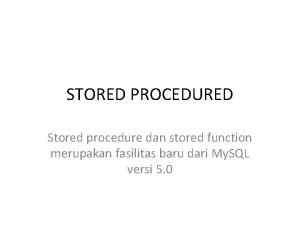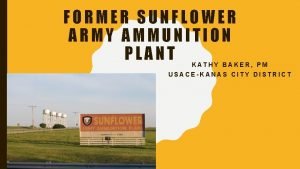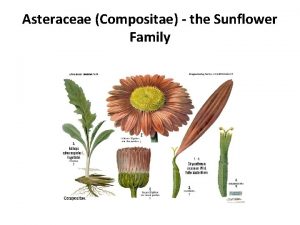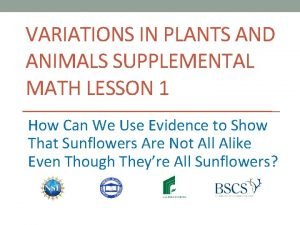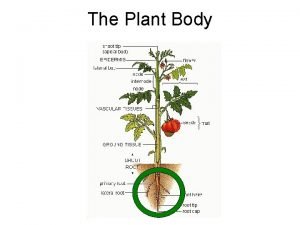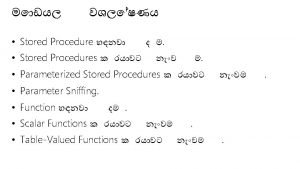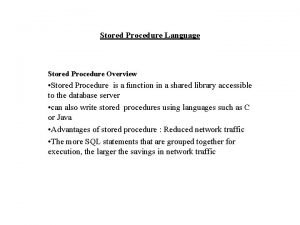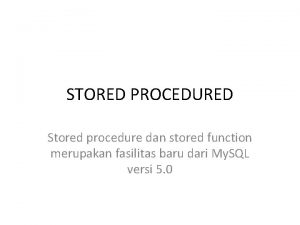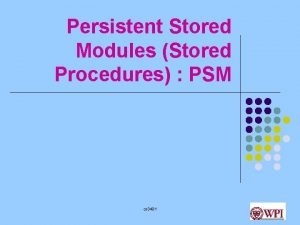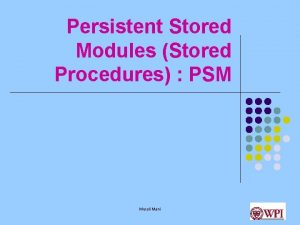Sunflower and Oilseed Storage Stored Products Research and





















- Slides: 21

Sunflower and Oilseed Storage Stored Products Research and Education Center Oklahoma State University Carol Jones Biosystems and Agricultural Engineering

Storage Concerns • • • Sunflower Canola Soybean Sesame Safflower

Storage Concerns • Moisture Content – Sunflower: 8 – 10% mc • Hulls dry faster than kernels • Overnight in a sealed jar – Canola: 10 – 12% mc – Soybeans: 12%. . . seed at 10% – Sesame: less than 6% – Safflower: 5 – 8%

Storage Concerns Why so dry? ? ? ? Rancidity in Oklahoma heat Oil content = microbial activity Oil content = heat Sweat period

Storage Concerns Sunflower: hulls have hair-like fibers can cause increase fire danger test weight 28 – 32 lb/bu. . . cover when hauling low speed augers to prevent damage

Storage Concerns Canola: • seed is VERY small, hard to handle • sweat period is about 6 weeks • test weight 52 lbs/bu • oil content 40 – 50% • begin aeration immediately

Storage Concerns Soybeans: • using a dryer? Keep air above 40% rh and around 85 degrees F. . • maybe ambient will work • run augers as full and slow as possible • test weight 60 lbs/bu • aerate once a month after initial cooling

Storage Concerns Sesame: • Much like handling canola except. . . • Planted in spring, harvested in fall • Takes longer to dry in windrow than canola • Fewer inputs than canola • High fat (50% oil), 25% protein, 43 – 47 lb/bu • Small flat seed • Goes rancid quickly in heat at MC > 6%

Storage Concerns Safflower: • 38 lb/bu test weight • 34 – 36% oil content • Seeds are white • Harvested and handled much like canola • Dries very quickly in windrows

Special Characteristics • Bins with perforated floors work best • Ambient air/fan sufficient for drying/cooling • No aeration? ? ? Move between bins

Prepare Bins for Storage • Floor perforations must be protected – Line bottom of bins • two layers of aluminum window screen • trampoline tarpaulin • Leave opening for grain unloading

Store Clean Canola • Debris can add moisture and attract insects • Clean using – scalper aspiration – indent cylinder cleaning – sieve screening • Clean to less than 2. 3% foreign material

Temperature and Moisture • Optimum temperature is 55°F • Double storage time for every 10° below 77° and 1% reduction in moisture below 9% No spoilage for at least 5 months Optimum storage Spoilage after 5 months

Temperature • Above 77°F – Free fatty acids may form when stored longer than a year (1 -1. 5% limit) and causes rancidity – peroxide levels increase – oil darkens – Insect activity increases

Molds • Mold forms above 60% equilibrium relative humidity (ERH) ERH and temperature influence on seed moisture content (NDSU 2005) (40% seed oil content) Temperature °F ERH % 20 30 40 50 60 70 80 20 4. 9 4. 5 4. 1 3. 8 3. 6 3. 4 3. 2 30 6. 5 5. 9 5. 5 5. 1 4. 8 4. 5 4. 3 40 8. 1 7. 4 6. 8 6. 3 6. 0 5. 6 5. 3 50 9. 6 8. 8 8. 1 7. 6 7. 1 6. 8 6. 4 60 11. 3 10. 3 9. 6 9. 0 8. 4 8. 0 7. 6 70 13. 1 12. 1 11. 2 10. 5 10. 0 9. 3 8. 9 80 15. 4 14. 2 13. 2 12. 3 11. 6 11. 0 10. 5 90 18. 6 17. 2 16. 0 15. 0 14. 2 13. 5 12. 8 Shaded area shows moisture content for optimum conditions

Aeration • • • Bin must have aeration system Full floor perforation is best Positive pressure is preferred Grain surface should be leveled Airflow rates for temperature management – 0. 08 – 0. 15 cfm/bu – At 0. 08 cfm, up to 150 -200 hours for a 20° drop • Airflow rates for natural air drying – 0. 4 – 2. 0 cfm/bu – increase static air pressure – run fans continuously until desired moisture

Aeration • Static pressure – Sunflower • 30 Ft. deep at 1. 0 cfm/bu. . . 15. 1 inches – for canola is 2 -3 times that of wheat • 30 ft. deep at 1. 0 cfm/bu. . . 75 inches!!!! • 10 ft. deep at 1. 0 cfm/bu. . . 7 inches – Soybeans • 30 ft. deep at 1. 0 cfm/bu. . . 7. 7 inches – Sesame • Similar to canola – Safflower • “Less than most other grains”

KEY THOUGHTS. . . • • Monitor bins closely. . . weekly Temp control + MC control + insect control = SUCCESSFUL OILSEED STORAGE

Insect Pests Found in Bins • Very few insects were found • Those found included: – – – Rusty grain beetle Red flour beetle Lesser grain borer Indianmeal moth Booklice • Predatory mites were also found

Oilseeds. . the market • • Another option Rotation Biodiesel Crusher in OKC

Questions? BIOSYSTEMS. OKSTATE. EDU/HOME/JCAROL
 Pengertian stored procedure
Pengertian stored procedure Inkjet or laser printer
Inkjet or laser printer Functional and innovative products
Functional and innovative products Primary storage vs secondary storage
Primary storage vs secondary storage Storage devices of computer
Storage devices of computer Coke vs pepsi products
Coke vs pepsi products Pictures of unsafe dented cans
Pictures of unsafe dented cans Uses rigid metallic platters
Uses rigid metallic platters Unified storage vs traditional storage
Unified storage vs traditional storage Sunflower lecithin vs soy
Sunflower lecithin vs soy Polychromatic luster cataract
Polychromatic luster cataract Sunflower army ammunition plant
Sunflower army ammunition plant Homo taxonomy
Homo taxonomy Sunflower seeds
Sunflower seeds Sunflower seeds
Sunflower seeds Back doors of prague 4
Back doors of prague 4 Kingdom of sunflower
Kingdom of sunflower Sunflower state crossword
Sunflower state crossword Sunflower poem
Sunflower poem Images of multicellular organisms
Images of multicellular organisms Propagative roots functions
Propagative roots functions Groundnut irrigation
Groundnut irrigation
